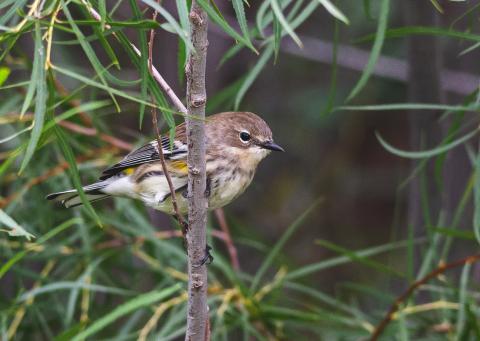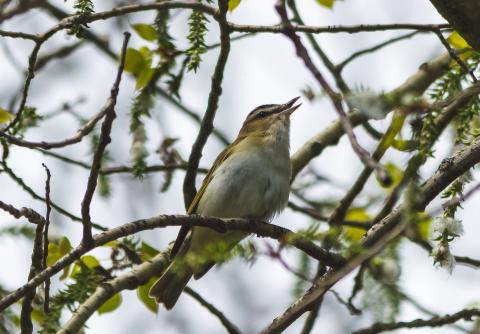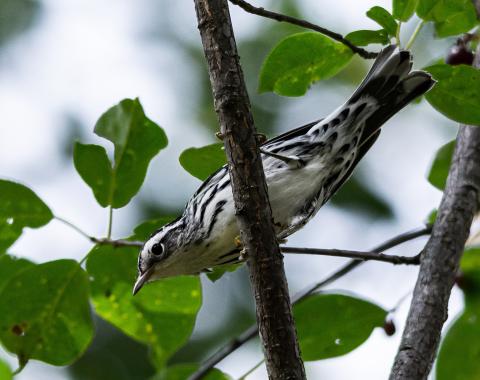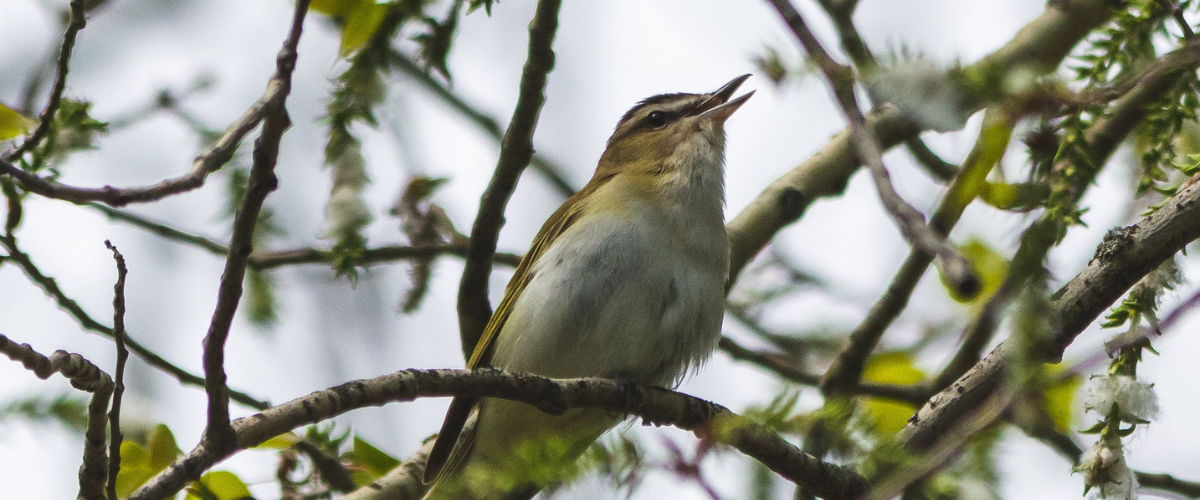How Migration Benefits Birds
Nick Carter, Marketing and Communications Volunteer
The breeding range of many different bird species lies within the boreal forest of northern Alberta. Some, like chickadees and jays, live there year-round. Most others, like vireos, flycatchers, and warblers, migrate to and from the boreal forest each year. This is a long, demanding trip for such small birds, but it has an obvious advantage. During the winter the boreal forest is subjected to harsh conditions that make survival a real struggle, and so most of our northern birds head to warmer climates ranging from the southern United States all the way to South America until the following spring.
Just because species can be found in the same place, however, doesn’t mean that their lifestyles and biology, or ‘life histories’, are the same. So what does this mean for their genetics and evolutionary trends? A recent paper published in Nature Ecology & Evolution, and authored by a team of scientists including RAM’s Curator of Ornithology Dr. Jocelyn Hudon, looks at the genomes of songbirds that breed in the boreal forest to see how their varying life histories impact their genetics (Pegan et al., 2025).
It might seem reasonable to assume that bird species migrating long distances would have a greater ability to scatter and disperse back and forth across their breeding and non-breeding ranges each year. A bird hatched in Alberta one year could, theoretically, head to Manitoba the next and breed with an individual born in Ontario, for example. If this was true, we’d see high instances of genes moving between populations within a species, a phenomenon known as gene flow.
To investigate the genetic patterns in boreal forest birds, the authors sampled and analyzed 1,673 genomes across 35 bird species. This included relatively long-distance migrants (vireos, flycatchers, warblers, thrushes, and sparrows) with wintering ranges spanning from Mexico to the Amazon basin depending on the species. They also incorporated species that either migrate short distances (such as the Dark-eyed Junco and Ruby-crowned Kinglet) or not at all (including Brown Creeper, Black-capped Chickadee, and Hairy Woodpecker) for comparison.

They found that the long-distance migrant species exhibited spatial genetic structure. This means that the genetic variations or genotypes of these species aren’t evenly distributed across their range, which was unexpected. Instead, the genotypes of long-distance migrants are more localised to specific areas. This result suggests that, despite the distances travelled, boreal songbirds that migrate further away tend to return to the same area of their breeding range each year and, as such, populations aren’t widely dispersing and spreading their genes around. It’s impressive to know that not only are these small songbirds making seasonal trips of hundreds of kilometers, but they’re able to find their way back to the same general area each spring. The length of time spent on migration might have an effect on the lack of dispersal in these species, as birds hatched in the boreal forest have little time to disperse and explore new areas before they have to migrate in late summer, and so they go back to the areas they know year after year.

The authors of this study also determined that the distance a species migrates and the genetic diversity within that species are strongly correlated. Species that migrate long distances tend to show more gene variations between individuals than short-distance or non-migrant species do. This could be thanks to the benefit of migration on survivorship. Species that migrate longer distances have better population stability, despite the many hazards associated with the journey. In other words, long-distance migrants tend to survive and reproduce better than short-distance or non-migratory species that are more exposed to harsh winter conditions in which more individuals may get weeded out, leading to less genetic variation within these species.
Altogether, these results suggest that long-distance seasonal migration strongly promotes genetic diversity within the species that undertake it, and that the evolution of new genetic traits within these species is supported by the population stability of these species, not individuals dispersing to different areas.

There’s a catch to this, however. For thousands of years this migratory strategy worked out well for boreal songbirds, but today these species are facing unprecedented habitat loss due to human activity. Climate change is another problem affecting the habitat of these species through the entirety of their ranges, and as a result we’re currently seeing population declines in many bird species. Given the genetic diversity of long-distance migrants they might have an easier time adapting to changing conditions, but in the course of this they might face severe population declines.
There are ways that we can all help our boreal songbirds in this rapidly-changing world. Reporting bird sightings on citizen science programs like eBird and iNaturalist are useful for ornithologists for getting a better understanding of where different bird species are being observed over time. Acting as a responsible steward for Alberta’s boreal forest and other natural regions will help ensure that our native songbird species will always have a home to come back to.
References
Pegan, T.M., Kimmitt, A.A., Benz, B.W. et al. Long-distance seasonal migration to the tropics promotes genetic diversity but not gene flow in boreal birds. Nat Ecol Evol 9, 957–969 (2025). https://doi.org/10.1038/s41559-025-02699-3
